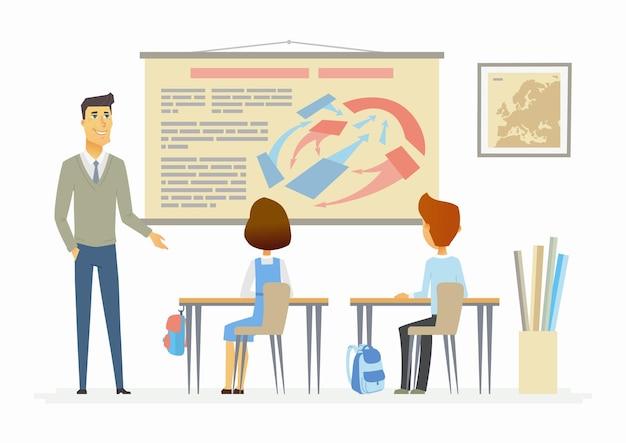Visual aids have become an integral part of our daily lives, from social media posts to presentations in classrooms and boardrooms. In a visually driven world, the power of images cannot be underestimated. They allow us to convey ideas and information in a more engaging and memorable way, making them an essential tool for effective communication. In this blog post, we will explore the meaning of visual images, the advantages of using visual aids, and how they can support your arguments.
Visual images, in simple terms, refer to any form of visual representation such as photographs, diagrams, charts, graphs, or videos. They provide a visual context that helps viewers quickly grasp information and enhance their comprehension. Visual aids not only facilitate learning but also create a sense of connection and interest among the audience.
In an educational setting, visual aids play a crucial role in enhancing students’ understanding and retention of information. Research has shown that incorporating visual material in teaching can improve students’ academic performance and engagement. Moreover, visual aids make complex concepts more accessible and promote critical thinking skills.
Join us as we delve deeper into the uses and advantages of visual communication, how visual aids can support your arguments, and explore real-life examples of audio-visual materials. Discover how incorporating visual aids into your communication can take your message to a whole new level in 2023 and beyond.

The Power of Visuals: Why Using Visual Aids Matters
In today’s fast-paced world, capturing someone’s attention can be as challenging as trying to juggle spaghetti. With information overload and dwindling attention spans, it’s vital to find compelling ways to convey your message. And that’s where visual aids come to the rescue, transforming your content from drab to fab! So, what exactly makes using visual aids so important? Let’s take a peek behind the curtain and unveil the magic!
Enhancing Understanding and Retention
Ever tried reading a lengthy block of text and felt your eyes glaze over like a donut? Yeah, we’ve all been there. Visual aids like charts, diagrams, and infographics are like a breath of fresh air, helping to simplify complex ideas and making them more accessible to your audience. Studies have shown that pairing written content with visuals can significantly improve comprehension and retention. So why not make your message stick like gum on a hot sidewalk?
Grabbing Attention like a Magician’s Trick
Imagine you’re at a party, and amidst all the noise and distractions, someone magically catches your eye wearing a sparkly hat. Visual aids work their magic in a similar way. They help you cut through the noise and grab your audience’s attention like a hypnotizing disco ball. Whether it’s an eye-catching image or a cleverly designed graph, visual aids make your content stand out like a unicorn in a sea of pigeons.
Conveying Information at Warp Speed
In today’s hyper-connected world, people have become accustomed to fast-paced and bite-sized information consumption. Visual aids are like the Usain Bolt of communication, enabling you to convey a boatload of information in mere seconds. A well-crafted infographic or an attention-grabbing slide can convey your key message quicker than you can say “supercalifragilisticexpialidocious.” So wave goodbye to long-winded explanations and hello to efficient and effective communication!
Stirring Emotions and Memorable Experiences
As humans, we’re wired to respond emotionally to our surroundings. Visual aids have the power to tug at our heartstrings, provoke laughter, or even bring a tear to our eye (in a good way!). By incorporating relevant images, videos, or even a clever GIF, you can create an emotional connection with your audience. And guess what? Emotionally engaged folks are more likely to remember your message, like an elephant with a photographic memory!
Boosting Engagement and Social Sharing
In our social-media-saturated world, engagement is the bread and butter of online success. Visual aids are like a secret handshake to boost engagement and increase the chances of your content being shared like a hot gossip in high school. People are more likely to engage with and share visually appealing content, propelling your message to new heights in the digital realm. So don’t be surprised if your message goes viral like an outbreak of happy dancing penguins!
Unleashing Creativity and Fun
Let’s face it, life can sometimes feel like a never-ending spreadsheet with an extra helping of monotony. Visual aids are your creative playground, giving you the freedom to infuse your content with personality, fun, and a touch of joie de vivre. So go ahead, unleash your inner Picasso, and create visually captivating masterpieces that will make your audience go “Wow!” and “OMG!” You’ll keep them entertained, engaged, and coming back for more like a comedian with an endless supply of punchlines!
So there you have it, folks! Visual aids are the star of the show, transforming your content from a snooze-fest to a box-office hit. Whether you’re educating, entertaining, or engaging, incorporating eye-catching visuals will leave a lasting impression on your audience. So hop on board the visual express and get ready to captivate, inspire, and delight like a wizard with a deck of magic cards!

FAQ: What is the Importance of Using Visual Aids?
Visual aids are an essential tool in effective communication, capturing attention, and enhancing understanding. In this FAQ-style subsection, we will explore the meaning of visual images, the benefits of using visual aids, and how they support arguments. So, let’s dive in and shed some light on the importance of visual aids!
What is the Meaning of Visual Images
Visual images refer to any form of visual representation, such as pictures, illustrations, graphs, charts, or diagrams. They are powerful tools that can convey complex information in a simplified and visually appealing manner, making it easier for the audience to comprehend, remember, and interpret the information being presented.
What do You Mean by Visual
When we say “visual,” we are referring to the sense of sight or anything that can be seen. In the realm of communication and learning, visual aids help engage the audience’s visual senses, allowing them to process and retain information more effectively. They offer a break from monotonous text, infusing life into presentations and capturing attention through the use of colors, shapes, and visual elements.
What is Visual Material
Visual material encompasses any visual aid or resource used to support and convey information visually. It includes but is not limited to photographs, videos, drawings, slideshows, animations, and infographics. Visual material adds an additional layer of context, making the information more engaging and memorable for the audience.
How do Visual Aids Help Students
Visual aids serve as a bridge that connects students with information in an engaging and interactive manner. They help simplify complex concepts, making them easier to understand and remember. With visual aids, students are more likely to retain information, participate actively in discussions, and develop a deeper understanding of the topic at hand. In short, visual aids facilitate learning and enhance overall academic performance.
What are the Advantages of Visual Information Media
Visual information media, including visual aids, offer numerous advantages. They break the monotony of textual information, spice up presentations, and capture the audience’s attention. Visual aids simplify complex concepts, make information more accessible, and enhance comprehension. They provide a visual representation that can appeal to various learning styles, making content more inclusive and accommodating for different individuals. Additionally, visual information media aids in information retention, as visuals are often easier to recall compared to pure text-based content.
What are the Uses of Visual Communication
Visual communication has various applications across different fields. It is widely used in business presentations, educational settings, marketing campaigns, and even social media. Visual aids help in conveying ideas, showcasing data trends, and telling stories that resonate with the audience. Whether it’s a sales pitch, a classroom lecture, or a persuasive advertisement, visual communication adds depth and impact to the message being delivered.
How do Visual Aids Support Your Arguments
Visual aids are powerful tools to support arguments and strengthen the impact of your message. By presenting data, statistics, or images that visually represent your point, you enhance the credibility and persuasiveness of your argument. Visual aids help make abstract concepts tangible, allowing your audience to grasp the information more easily. They stimulate the imagination and facilitate a deeper connection with the topic, helping your arguments to resonate and be remembered.
What are Examples of Audio Visual
Examples of audiovisual materials include videos, slideshows, presentations, films, television shows, and animations. These mediums combine both visual and auditory elements, providing a holistic experience that engages multiple senses simultaneously. Audiovisual content appeals to a wide range of audiences and is often captivating due to its immersive and dynamic nature.
What is the Importance of Using Visual Aids
By employing visual aids, you create a more engaging and memorable experience for your audience. Visual aids help in grabbing attention, increasing comprehension, enhancing retention, and making information more relatable. In an era where attention spans are shrinking, visual aids are a potent tool to cut through the noise and leave a lasting impact. So, whether you’re presenting research findings, delivering a speech, or teaching a class, incorporating visual aids is crucial for effective communication and knowledge transfer.
What are the Advantages and Disadvantages of Audiovisual Communication
Audiovisual communication comes with its share of advantages and disadvantages. On the plus side, it offers an immersive and dynamic experience, enhancing audience engagement and comprehension. It is also more inclusive, catering to different learning styles and preferences. However, audiovisual communication can be resource-intensive, requiring equipment and technical expertise. It may also overwhelm or distract certain individuals, and the quality of audiovisual content can vary. It is essential to strike a balance and assess the specific context and audience when deciding to utilize audiovisual communication.
What is Another Word for Visual
Another word for visual is “ocular.” It refers to anything related to or perceived through the sense of sight. So, when we talk about visual aids or visual communication, we can also use the term “ocular aids” or “ocular communication.” But let’s be honest, “visual” sounds much cooler and doesn’t sound like we’re about to conduct an eye exam!
What Does the Audiovisual Material Tell Us
Audiovisual material provides valuable information through a combination of visual and auditory elements. It can tell stories, educate, entertain, and capture the essence of a message. Audiovisual material offers a multi-dimensional experience that goes beyond words, enabling deeper understanding and emotional connection. It allows us to immerse ourselves in narratives, explore different perspectives, and unleash the power of imagination.
Visual aids play a pivotal role in communication, learning, and knowledge transfer. They captivate audiences, simplify complex concepts, and enhance understanding. By incorporating visual aids, we unlock the full potential of our messages and create a more engaging and unforgettable experience. So, embrace the power of visuals, and let your ideas shine brighter and bolder!
